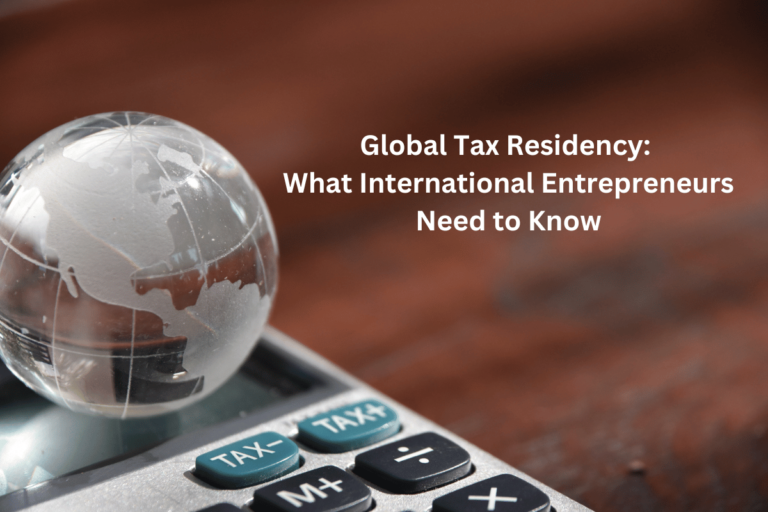The Ultimate Guide to Financial Independence and Retiring Early (FIRE)
Are you tired of the daily grind and dreaming of an early escape from the 9-to-5 rat race? The FIRE movement might be your ticket to financial freedom and early retirement planning. But what exactly is FIRE, and how can it revolutionize your approach to wealth-building strategies?
FIRE, short for Financial Independence, Retire Early, is a lifestyle philosophy that’s gaining traction among those seeking to break free from traditional career paths. It’s not just about saving pennies; it’s about reimagining your entire financial future. With only 1% of Americans aged 40-44 retired, according to recent data, FIRE offers a bold alternative to the norm.
This movement, rooted in the 1992 bestseller “Your Money Or Your Life,” challenges us to view our expenses through the lens of life energy – how many working hours does each purchase truly cost? By embracing frugality and aggressive saving, FIRE followers aim to stash away up to 75% of their income, enabling them to retire decades earlier than their peers.
But FIRE isn’t a one-size-fits-all solution. From Regular FIRE to Lean FIRE and Fat FIRE, there are various approaches to suit different lifestyle goals and financial situations. Whether you’re aiming for a modest early retirement or planning to maintain a lavish lifestyle, understanding these FIRE variations is key to crafting your path to financial independence.
Key Takeaways
- FIRE focuses on extreme savings and investments for early retirement
- The average retirement age is 61, but FIRE aims to lower this significantly
- FIRE followers typically withdraw 3-4% of savings annually in retirement
- The Rule of 25 is a common guideline for calculating retirement needs
- FIRE requires discipline, strategic budgeting, and often a frugal lifestyle
- There are various FIRE approaches, including Regular, Lean, and Fat FIRE
- Calculating your personal FIRE number is crucial for successful planning
Understanding the FIRE Movement
The FIRE movement, short for Financial Independence, Retire Early, has become very popular lately. It challenges old ideas about retirement. It encourages people to save a lot and invest smartly to be financially free early.
Definition and Core Principles
FIRE is all about saving a lot and investing wisely. People aim to save 25 times their yearly expenses. This means saving millions for retirement.
They live below their means, saving 50% to 70% of their income. This extreme saving is key to FIRE.
Origins and Evolution
The FIRE movement started with the 1992 book “Your Money or Your Life.” It has grown thanks to social media and blogs. Now, FIRE helps people of all ages, from 25 to 55, reach retirement sooner.
Key Components of FIRE
At the heart of FIRE is the 4% rule. It says you can safely take out 4% of your savings each year, adjusting for inflation. This helps your money last 30 years in retirement.
FIRE also focuses on saving taxes. It uses a mix of accounts like IRAs, 401(k)s, and regular brokerage accounts. This strategy helps keep more money in your pocket.
- Fat FIRE: Maintaining current lifestyle in early retirement
- Lean FIRE: Living off minimal expenses, often $30,000 or less annually
- Barista FIRE: Semi-retirement with part-time work
These options let people customize their FIRE journey. They can match their goals and life to their financial plan.
The Benefits of Pursuing Financial Independence
Financial independence opens up a world of possibilities. It’s more than just money. With planning and dedication, you can achieve early retirement and change your life.
One big perk is lifestyle flexibility. You’re free from the 9-to-5 job. Imagine waking up and choosing how to spend your day. This freedom lets you grow, build deeper relationships, and help your community.
Financial independence also means peace of mind. You have enough savings to handle unexpected costs. This security reduces stress and improves your health. The 4% withdrawal rule helps you live off your investments without worry.
- Freedom to choose fulfilling work
- Time for personal pursuits and relationships
- Reduced financial stress
- Improved mental and physical health
The journey to financial independence is worth it. Saving 50% of your income makes work optional. This lets you live a life that matches your values and dreams.
“Financial independence is about creating a life rich in experiences, not just money.”
The path to financial freedom is unique for everyone. You might choose Lean FIRE, Fat FIRE, or something in between. The goal is to live a life filled with joy and purpose.
Calculating Your FIRE Number
Finding out how much you need for retirement is key in the FIRE journey. The FIRE number helps you figure out your savings goal for financial freedom.
The 25x Rule and 4% Rule
The 25x rule is a big part of FIRE. It means you multiply your yearly retirement costs by 25. This rule matches the 4% rule, which lets you take out 4% of your savings each year without running out.
- $30,000 yearly spending: $750,000 savings goal
- $50,000 yearly spending: $1.25 million savings goal
- $80,000 yearly spending: $2 million savings goal
Adjusting for Inflation and Lifestyle Changes
The US economy has seen about 3% inflation each year. Add this to your FIRE number to keep your money’s value. Think about lifestyle changes and surprises when setting your savings goal.
Tools for FIRE Calculations
Online FIRE calculators can estimate your savings and returns. For example, a 25-year-old wanting to retire at 45 with $50,000 a year would need to save $2,255 monthly. This is to reach $1.25 million in 20 years, with an 8% return.
Remember, the S&P 500 has returned about 10% annually. Investing in low-cost index funds that track this index is a good choice for FIRE. Adjust your plan as needed to meet your financial freedom goals.
Strategies for Aggressive Saving and Investing
To reach financial freedom, you need to save a lot and invest wisely. The FIRE movement suggests saving 50-75% of your income to retire early. It might seem hard, but with careful spending and more income, it’s doable.
First, make the most of tax-advantaged accounts like 401(k)s and IRAs. They offer big tax savings and help grow your savings. Choose low-cost index funds for their diversification and long-term success.
Living frugally is crucial for saving more. Cut down on unnecessary spending, lower your housing costs, and watch your expenses. Every dollar saved brings you closer to financial freedom.
“The 4% rule in retirement planning suggests withdrawing no more than 4% annually from your portfolio to last at least 30 years.”
Here are more ways to speed up your FIRE journey:
- Boost your income with side jobs or career moves
- Invest in a mix of stocks, bonds, and ETFs that fit your risk level
- Clear high-interest debt to save more for investing
- Build an emergency fund for 3-6 months of living expenses
- Stay invested for the long haul, ignoring short-term market ups and downs
By saving aggressively, investing smartly, and living frugally, you can reach financial independence and retire early.
Optimizing Your Investment Portfolio for FIRE
Smart FIRE investment strategies are key to reaching your financial independence goals. Let’s explore how to create a winning portfolio that aligns with FIRE principles.
Asset Allocation Strategies
Portfolio optimization is crucial for FIRE success. Many FIRE followers favor a mix of stocks and bonds. They adjust their allocation based on risk tolerance and time horizon.
As you near your target retirement date, it’s wise to shift towards a more conservative asset mix.
Passive vs. Active Investing
Passive investing through low-cost index funds is popular among FIRE enthusiasts. This approach offers broad market exposure and keeps fees low. It’s vital for long-term wealth building.
The FIRE movement often recommends Vanguard index funds for their minimal fees and reliable performance.
Tax-Efficient Investment Vehicles
Tax-efficient investing is a cornerstone of FIRE strategies. Utilizing vehicles like Roth IRAs and 401(k)s can significantly reduce your tax burden. Consider opening taxable brokerage accounts too.
They provide flexibility to access funds before traditional retirement age.
Remember, the 4% rule is a common guideline in FIRE circles. It suggests that if your yearly spending is 4% or less of your investment balance, your savings should last indefinitely. Aim to keep investment fees low, as they can eat into your returns over time.
By following these principles and regularly rebalancing your portfolio, you’ll be on track to achieve your FIRE goals.
Frugal Living Tips for Accelerating Your FIRE Journey
Living frugally is crucial for achieving financial freedom and early retirement. Adopting a minimalist lifestyle can greatly reduce expenses. This helps you reach your FIRE goals faster. Here are some practical tips to save more and spend less.
Begin by tracking your expenses to find where you can cut back. Housing is a big expense. Consider downsizing or house hacking to save money. Transportation costs can also add up. Try using public transit or biking to save and stay healthy.
Food expenses can quickly increase. Plan your meals and cook at home to cut down on dining out costs. Embracing a minimalist lifestyle means less clutter and fewer unnecessary purchases. This not only saves money but also simplifies your life.
To retire early with a FIRE number of $1.75 million, a 30-year-old aiming to retire by 50 must save $87,500 annually for 20 years, setting aside between 50 and 70% of their income.
Look for free or low-cost entertainment to keep your life fulfilling while saving aggressively. Focus on experiences over material goods. Remember, the goal is to balance being frugal with enjoying life to avoid burnout on your FIRE journey.
- Track expenses and identify areas for expense reduction
- Consider downsizing or house hacking to lower housing costs
- Use public transit or bike to reduce transportation expenses
- Plan meals and cook at home to save on food costs
- Embrace a minimalist lifestyle to avoid unnecessary spending
By using these frugal living strategies, you can speed up your journey to financial independence. And you can still enjoy a fulfilling life.
Navigating Healthcare Costs in Early Retirement
Healthcare is key when planning for early retirement. Many early retirees face the challenge of managing medical costs before Medicare kicks in. Let’s look at some ways to plan for these costs.
Health Insurance Options
When you retire early, you have a few health insurance choices:
- COBRA: You can keep your current coverage for up to 18 months. But, you’ll have to pay the full premium and extra costs.
- Health Insurance Marketplace: This offers many plans. You might get premium tax credits based on your income.
- Barista FIRE: Working part-time (about 20 hours a week) can help you get employer-sponsored health benefits.
- Private health insurance: It’s available but often costs more than Marketplace plans.
- Spouse’s insurance: If your partner has access to their employer’s coverage.
Building a Healthcare Fund
It’s important to have a healthcare fund for early retirement. Think about using a Health Savings Account (HSA) for tax benefits on medical expenses. When planning your budget, remember to include premiums, deductibles, copayments, and coinsurance. Healthcare costs can rise, so plan ahead.
Strategies for Minimizing Medical Expenses
To manage healthcare costs in early retirement:
- Stay healthy to lower your medical needs.
- Use in-network providers for discounts.
- Look into short-term health insurance for temporary coverage.
- Check if you qualify for Medicaid based on your state’s income rules.
- Consider medical tourism for big procedures if it feels right for you.
By using these strategies and planning well, you can handle early retirement healthcare costs. This will help secure your financial future.
FIRE Variations: Choosing the Right Approach for You
The FIRE movement has many paths to financial freedom. Each one fits different lifestyles and financial dreams. Let’s look at some popular FIRE paths to find the best one for you.
LeanFIRE is all about saving a lot, up to 50% of your income. It lets you retire early in your 30s. But, you’ll need to live simply. FatFIRE, on the other hand, means a more comfortable retirement. But, you’ll need a big savings and it might take longer.
BaristaFIRE is a balance. It lets you retire early from your main job. Then, you can work part-time or follow your passions. This is good if you save less than 50% of your income.
- CoastFIRE: Save a lot early, then let your money grow without adding more.
- Traditional FIRE: Save and invest about 50% of your income each year.
- Cash Flow FI: Make money passively to replace your job income.
Choosing the right FIRE path depends on your situation, how much risk you can take, and what you want in retirement. Many mix different paths or change them over time. The main thing is to start early, make more money, and spend less.
“The FIRE movement is for individuals willing to save, invest, and limit spending now to gain flexibility and autonomy in the future.”
Whichever path you pick, figure out your FIRE number. Multiply your expected yearly expenses in retirement by 25. This way, you can plan your path to early retirement and financial freedom.
Overcoming Common Challenges on the Path to FIRE
The journey to Financial Independence and Retiring Early (FIRE) is exciting but has its challenges. We’ll look at common FIRE hurdles and how to overcome them. By facing these obstacles, you’ll be ready for long-term financial planning and a good work-life balance.
Maintaining Motivation
Keeping motivation can be hard. Set small, reachable goals on your FIRE path. Celebrate each success, like hitting a savings goal or cutting expenses. Join FIRE communities online or in person for support and ideas.
Remember, Sam Dogen retired at 34. His story shows dedication can lead to early retirement.
Dealing with Market Volatility
Market ups and downs are part of FIRE. Learn about investing and market cycles to feel more confident. Stay true to your investment plan, even when markets drop.
Diversify your investments to manage risk. The 4% Rule can guide safe retirement withdrawals, making sure your savings last.
Balancing FIRE Goals with Life Enjoyment
While saving is crucial, don’t forget to enjoy life now. Find a balance between your FIRE goals and enjoying today. Slow FI or Coast FI might offer more flexibility if you prefer.
Remember, FIRE is about loving your life now and in the future. Aim for a high savings rate but allow yourself treats to avoid burnout.
Source Links
- Financial Independence, Retire Early (FIRE): How It Works
- Financial Independence Retire Early: A comprehensive guide
- FIRE Movement: What It Is, How It Works – NerdWallet
- Mastering Financial Independence: A Guide to the FIRE Movement and Early Retirement Strategies
- What is Financial Independence, Retire Early (FIRE)? | Bankrate
- Achieving Financial Independence, Retire Early (FIRE): Complete Guide
- How To Calculate Your FIRE Number | Bankrate
- FIRE Calculator – Financial Independence Retire Early | WalletBurst
- The Ultimate Guide to FIRE
- FIRE (Financial Independence, Retire Early): A Skeptic’s Guide
- What Is the FIRE Movement?
- Ultimate guide to FIRE: Financial Independence, Retire Early | The Chorizo Chronicles
- Stock Market Course | Our Rich Journey
- Three steps toward FIRE (financial independence, retire early)
- FIRE: Complete Guide to Financial Independence & Retiring Early
- Catching FIRE 1: Frugal FI’s Ultimate Guide to Financial Freedom
- 9 Health Care Options For Early Retirees | Bankrate
- Early Retirement: A Step-By-Step Guide And Calculator – NerdWallet
- The True Cost of Healthcare in Early Retirement: A Guide to Open Enrollment – Physician on FIRE
- The Ultimate Guide To The FIRE Movement – NerdWallet
- What is F.I.R.E., the Different Types, and How to Achieve It
- 5 Different Types Of FIRE | Bankrate
- The Ultimate Guide to the FIRE Movement – The Fioneers
- I’m Unwilling To Change The Rules Of FIRE To Win The Game
- 40+ F.I.R.E. – Understanding the Financial Independence, Retire Early Movement






